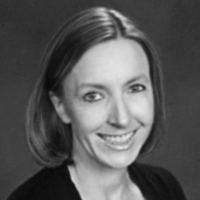*Editor’s note: This text-based course is a transcript of the webinar, Part 4: Emerging Treatments for Swallowing Disorders: Where We Are Headed, presented by Debra Suiter, PhD, CCC-SLP, BCS-S.
Course Learning Objectives
- After this course, participants will be able to list three principles of strength training and how they might be applied to dysphagia treatment.
- After this course, participants will be able to describe three newly emerging treatments for swallowing disorders.
- After this course, participants will be able to describe new findings pertinent to use of electrical stimulation treatment for swallowing disorders.
Introduction and Overview
Today we are going to be talking about emerging treatments for dysphagia and where we are headed as a field.
efore we begin, I have to give my disclosures. My financial disclosures include that I receive a salary from the University of Kentucky. I have received an honorarium from SpeechPathology.com for this presentation. I receive royalties from Springer Publishing for a book that Dr. Steven Leder and I published on the Yale Swallow Protocol. My non-financial disclosures include that I am the current Chair of the ASHA Board of Special Interest Group Coordinators, and I am a Board member of the American Board of Swallowing and Swallowing Disorders.
Traditional Dysphagia Treatment
Let's begin by talking about traditional treatment and newly emerging treatments. Those of you who participated yesterday heard my colleague Tammy review some information on currently available treatments for dysphagia. Despite our best efforts, I think many of us who have been practicing with patients with dysphagia for a number of years have experienced the frustration of trying everything that we know to do - everything that is currently available to us - and yet we still are not having success. We still have patients who do not make any significant improvement, or we have patients we simply cannot get back to tolerating a regular diet. What is it about the treatments that we are doing? Is it something about the treatments that we are doing currently that is leading us to oftentimes have less than positive outcomes with our patients?
I think there are a couple of factors probably related to this. First, there may simply be patient-related factors. There are treatments that our patients receive that may affect progress. For instance, radiation treatment for head and neck cancer is great at curing cancer, but it causes damage to tissues surrounding the tumor.
Oftentimes we simply are not getting the outcomes that we would like with the traditional treatments we are using. Are there other patient-related factors that we are unaware of? Perhaps part of the lack of success with some of the traditional treatments is due to the the fact that those treatments were developed based on what we currently know about swallow pathophysiology, and what we know is based on instrumentation that is currently available to us. For most of us what that means is videofluoroscopy. Perhaps it is endoscopy, or even electromyography (EMG), but many of us do not have access to EMG on a regular basis. Maybe those instruments are not giving us the information that we need. When we talked about instrumental assessments in a previous webinar, I talked about high-resolution manometry, which is a means of assessing pressure within the pharynx. I think that newly emerging technology has a lot to offer, and perhaps might help us to better derive treatments that are truly aimed at the underlying pathophysiology. I think perhaps part of the issue is that we simply do not fully understand what is happening with our patients’ swallowing, and so we do not have treatments designed to address the true pathophysiology.
One of the other reasons that we sometimes do not see improvements from traditional treatment is that we really do not have set protocols regarding frequency and duration of treatment. If you think about it, with some of the rehabilitative exercises that have been developed over the years - those traditional swallowing exercises like the effortful swallow or the Masako maneuver that we have been taught to use - we do not have any information currently available to us that says how frequently somebody has to perform those exercises in order to see success. How many weeks does somebody need to do those in order to significantly improve? I think we all have set numbers that we give patients. I often tell patients to perform five sets, five times a day. Is that a realistic number? Where did I come up with that number?

